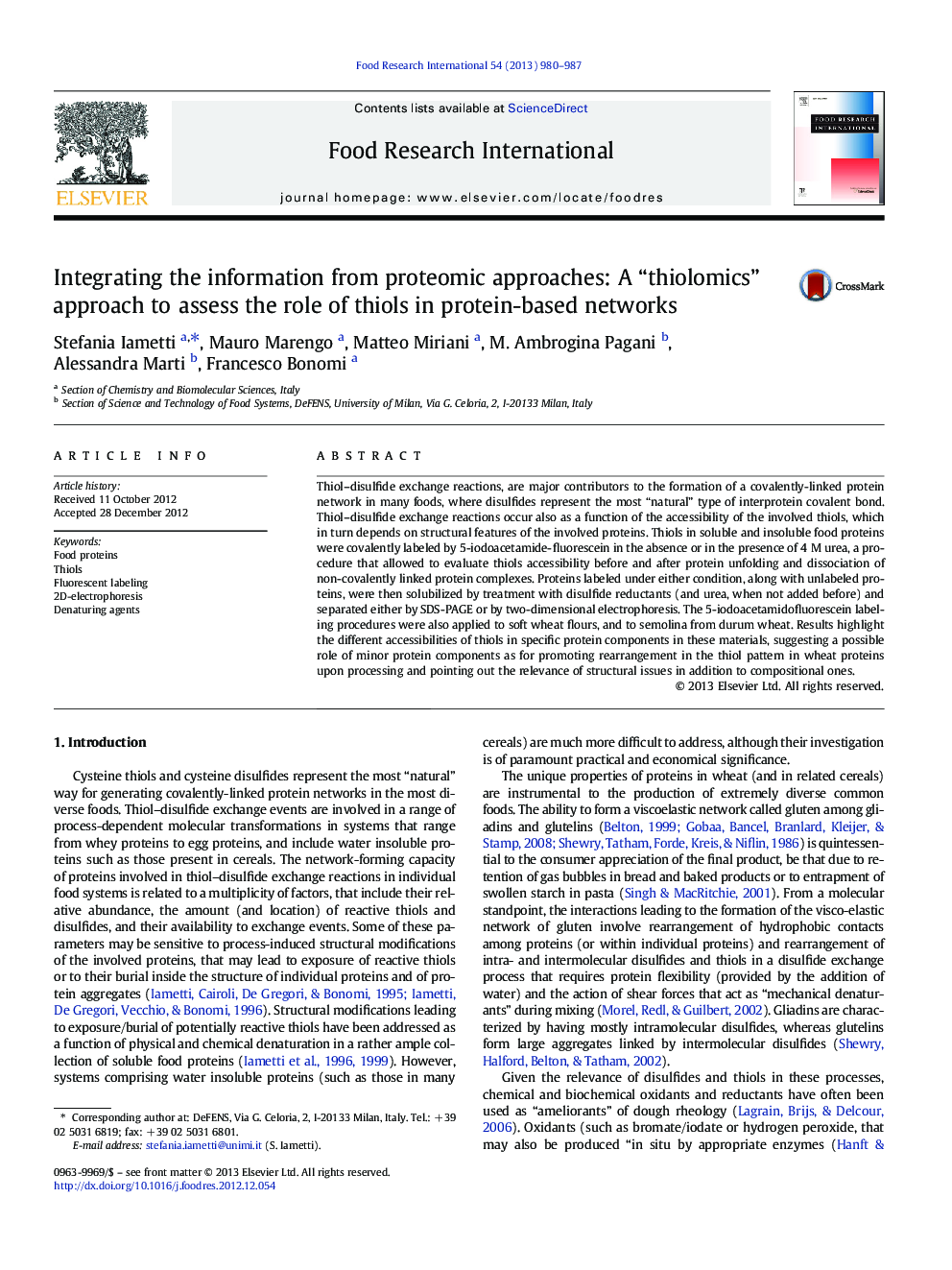| Article ID | Journal | Published Year | Pages | File Type |
|---|---|---|---|---|
| 6397054 | Food Research International | 2013 | 8 Pages |
Thiol-disulfide exchange reactions, are major contributors to the formation of a covalently-linked protein network in many foods, where disulfides represent the most “natural” type of interprotein covalent bond. Thiol-disulfide exchange reactions occur also as a function of the accessibility of the involved thiols, which in turn depends on structural features of the involved proteins. Thiols in soluble and insoluble food proteins were covalently labeled by 5-iodoacetamide-fluorescein in the absence or in the presence of 4Â M urea, a procedure that allowed to evaluate thiols accessibility before and after protein unfolding and dissociation of non-covalently linked protein complexes. Proteins labeled under either condition, along with unlabeled proteins, were then solubilized by treatment with disulfide reductants (and urea, when not added before) and separated either by SDS-PAGE or by two-dimensional electrophoresis. The 5-iodoacetamidofluorescein labeling procedures were also applied to soft wheat flours, and to semolina from durum wheat. Results highlight the different accessibilities of thiols in specific protein components in these materials, suggesting a possible role of minor protein components as for promoting rearrangement in the thiol pattern in wheat proteins upon processing and pointing out the relevance of structural issues in addition to compositional ones.
